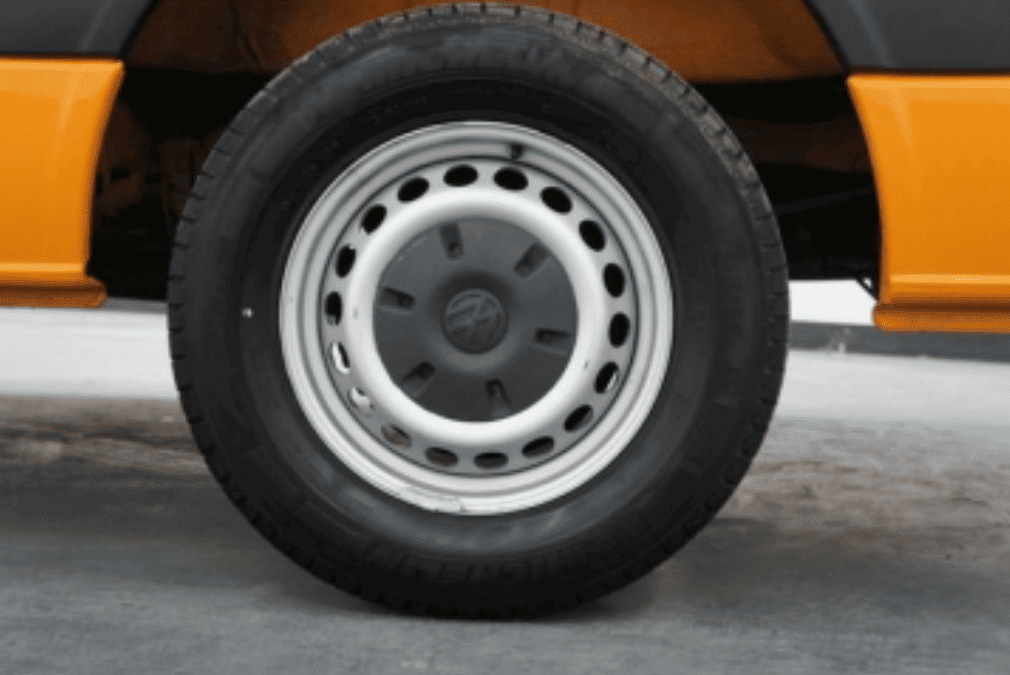
If you’re entertaining the idea of building a do-it-yourself van
to turn it into a Camper, this page is for you!
Is it possible to homologate a do-it-yourself motorhome in Italy in 2021?
Short Answer: Ni.
It is possible yes, but not easy.
When I first approached the idea of
Turning a van into a Do-It-Yourself camper.
, inspired by the many Vanlifers already doing it in America, I immediately ran up against Italian bureaucratic regulations and their complexity.
The information found on the internet about how to homologate a camper van in Italy was scarce, confusing and many times contradictory. According to some it was impossible, according to others extremely expensive.
After weeks of research and sifting through hundreds of sites, I finally managed to get out and find a way to homologate my van.
In this guide, I have decided to clarify once and for all the various ways to homologate your van as a camper, in the clearest and most detailed way.
Below, you will find the table of contents of the article.
UPDATE:I have published the long-awaited second part of this guide, where I explain how to homologate a fixed setup in Germany in more detail and where I analyze all the steps you need to take to nationalize your camper van once back in Italy. You can find it here: Homologating Your VAN: How to Nationalize a Camper Van.
Revised Article: 08/01/2023
TABLE OF CONTENTS
How to homologate a camper van in Italy?
1. How Homologation works in Italy
Before we begin, a premise
The Italian legislation is not ready for the homologations of vans in Do-It-Yourself campers.
Homologating a camper van with fixed fittings in Italy, following Italian laws and without the stratagem of relying on foreign countries, is a process close to impossible .
Now let’s get into the details and explain how it (doesn’t) work.

WHAT DOES IT MEAN TO HOMOLOGATE A VAN AS A CAMPER?
Throughout the world, motorized vehicles are conventionally classified into precise categories.
Commercial cargo vans (also called trucks) fall into the N1 category.
In contrast, vehicles used to transport people up to 8 seats (such as motorhomes or minibuses), are classified in category M1 (and depending on the “intended use” specified on the booklet, they may be used precisely as minibuses or caravans/camper).
To recap: goods N1, people M1.
If you decide to convert a cargo van with fixed structures (for example as in my case, a VW Crafter), to drive it legally on Italian roads you need to change the use of the vehicle from van N1, to vehicle for transport of persons M1, with wording on the booklet “AUTOCARAVAN”.

HOMOLOGATE A CAMPER VAN: WHAT THE ITALIAN LAW PROVIDES FOR
The last time the Italian legislature took an interest in the subject was in 2009, through a Circular of the Department of Land Transport (downloadable from the official website here: PROT. NO. 33892/23/32- DIV2) in which the possibility of homologating an N1 vehicle to M1 is expressly excluded, at least if it has not already been registered as M1 in the past.
To make it simple, In Italy there is no specific procedure to homologate a van into a camper.
Nevertheless, browsing through many sites of users who have already hit their heads with this problem, it seems that the only possibility, (very arduous and complex) is to start an approval from scratch, which requires:
- Manufacturer’s Clearance: means having to contact the manufacturer and ask for written permission to modify the vehicle. Manufacturers hardly ever issue the certification (having no interest in it) and never do for vehicles older than 7 years.
- Design byan Engineer: the design of the stand cannot be done by you but must be drawn up, signed and certified by a registered engineer.
- Approval of the project by the manufacturer: Once the project is done, you will have to go back to the manufacturer and get approval (in written and signed form) of the camper project.
- Certificate of Execution of the Work “in a workmanlike manner”: Once the van has been towed, you will need to obtain a certificate from the professional or craftsman who carried out the conversion (it is very problematic to certify for yourself)
- Vehicle Testing by Manufacturer and Second Clearance: For a third time, you will need to contact the manufacturer and, if they still answer the phone, ask them to test your new van and certify its safety with a second clearance.
- Register the vehicle as M1 at the DMV: The last step is to take all the documents to the DMV, cross your fingers, and finally register the vehicle as M1.
DIFFICULTY OF THE PROCESS
Summing up the previous table in one word: INCUBUS!
Let’s face it: getting 3 different certifications from the manufacturer, engineer’s project, craftsman’s certification and DMV recognition is complex, expensive and takes a long, long time.
Some specialized workshops/mechanics (and with the right connections *coff coff*) who take care of the whole rigmarole and manage to get the necessary certificates can also be found in Italy, but they are the exception to the rule.
Personally, I would not recommend anyone to go into this meander of Italian bureaucracy.
If you read the list and you’re already giving up on the idea of campervanning your van though, don’t despair because there is hope.
Indeed, as with all things in Italy (beautiful Italy!), there is always a way out (or three!).
In the next three chapters, we will discuss methods for:
- Ways to Legally Fix the Rules in Italy
- Homologate the camper van passing through Germany (what I chose to do)
- Rely on specialized companies
Let’s cut to the chase and go over how you can homologate your van!
2. Two Ways to (Legally) Fix the Rules in Italy
Below are two ways you can legally drive your truck without having to go through a foreign country.
Before we get started though, I’d like to point out that both ways, while 100% legal, require some compromise in set up that may work great for some, and less so for others.
Let’s see now in detail how these two options work!

MODE 1. BUY A M1 VEHICLE AND RE-TRADE IT
The first method is as simple as it is ingenious: You can buy an M1 “CARAVAN” (so already intended to transport people as a camper), empty it, and repurpose it as you see fit.
The vehicle has already been approved as an RV in the past and does not need any additional certificates.
ADVANTAGES
- quick process
- you won’t have to spend any money for re-approval
- you could recycle some parts from the previous setup
CONS
- you are limited to certain types of vehicles (M1) that may not reflect your needs
- M1 vehicles generally have many windows, they can be difficult to insulate and cover up
- vehicles are not completely blank canvases, old installations can leave marks
- you have to do the extra work of removing the old interior and rebuilding it
- it takes time to find a good vehicle with decent mileage, and there are very few second-hand ones in Italy
For many enthusiasts, this route is the quickest and easiest. If you are flexible in your conversion idea and are willing to adapt your setup to the vehicle you find, buying an M1-caravan vehicle directly I think is the choice for you: it saves you the headaches of homologation and costs less.
Personally, I didn’t choose this way because I had a project already in mind and I wanted to start from a precise vehicle (a cargo van) without making compromises, but of course, what doesn’t work for me can work very well for others.
Note 1: The vehicle must have both the words M1 and “CARAVAN” on the registration. A passenger van for example, is category M1, but because it is not a “CARAVAN” it cannot legally travel as a camper van.
Note 2: Motorhomes (van and non-van) from the factory are “M1-caravan” on the registration, but since they were built as motorhomes from the origin, the manufacturer will have filed the layout drawing and that is why they cannot be changed (unless you want to go through homologation again). Vehicles that you can re-fit entirely without approval are vans that have already been transmogrified into RVs, which for this reason do not have a precise drawing filed with the DMV.
MODE 2. SET UP A N1 VAN WITH MOBILE STRUCTURES
This is the most creative method on the list.
By Italian law, we already understand that you cannot live in an N1 vehicle used for transporting goods.
But at the same time, who’s to say you can’t transport a bed, a kitchen, and some furniture in your truck? Answer: none! 😉
That’s exactly the logic of this method: camper an N1 van with a mobile setup and not approve itas a camper.
The process is totally legal and obviously comes with its pros and cons, let’s see them together.
ADVANTAGES
- You do not need to re-register the vehicle and therefore, you do not have any costs
- No problem with audits: just remove the mobile set-up at the time of any inspection
- You save yourself a lot of bureaucratic procedures and headaches.
- It’s easy to insert new furniture whenever you want
CONS
- the set-up MUST be entirely removable in a reasonable time (a couple of hours)
- You will not be able to use glue, solder and nails
- You’ll have to get clever with straps and joints
- You will have to give up implementing some amenities (e.g., solar panels, structural windows, fixed electrical system, fixed bath-shower etc.)
If you’re in a hurry to get going and save some money, setting up a van with mobile structures is probably the right choice for you.
By taking this route, you’ll have the flexibility of being able to change outfits whenever you want (without having to unscrew, unbolt and destroy parts of your van) and no stress about homologation. The flip side of the coin, is that if you were thinking of a big conversion, you will have to give up some amenities such as.
solar panels
,
fixed electrical system
o
bathroom
.
SUMMING UP
As we have seen, both methods save us from the re-approval process and thus the endless bureaucracy behind it. Nevertheless, both carry disadvantages/limitations when setting up and therefore could not satisfy everyone.
In my case, for example, neither starting from an M1 vehicle, nor a mobile set-up were solutions compatible with what I had in mind: my idea was to build a vehicle where I could travel and live full-time for periods of several months, and for this I needed more comfort and more freedom to create.
If you are in the same situation, and you are interested in homologating any cargo van set up freely according to your tastes, read on and I will tell you how I did it (passing through Germany).
3. How to homologate a camper van
Passing through Germany
Homologating your vehicle through Germany is the best method for those who need total freedom to convert and do not want to make compromises.
The timing is fast, the procedure is clear and the administration costs, although not zero, are much lower than a homologation in Italy or relying on a specialized company.
To go this route, however, it should be noted that you need to buy your vehicle in Germany, because to homologate in Germany (as I will explain below) you will need a German license plate.
If you are already in possession of your camper van and have an Italian license plate, unfortunately there is no way for you to pass through Germany.
In that case, I suggest you review the two options explained above to get around the rules (legally) in Italy and, if neither of them suits you, think about using a specialized company.

WHAT THE GERMAN LAW PROVIDES FOR
The German law on the homologation of N1 vehicles (vans) in M1 (motorhomes) as often happens, is light years ahead of Italy.
In fact, if in Italy we require certifications upon certifications, in Germany the procedure is much simpler and is explained in a very simple way on the TÜV website (Technical Control Association).
Basically, all you need are:
- A Chair and a Table, where to eat
- A Bed, where to sleep (or as the German website says, “where to dream” 😉
- A Kitchen, must include a stove permanently attached to the structure and a place to store cooking utensils (note: if you use a gas stove, the cylinder must be securely attached and you must insert an ignition fuse to block the gas in case the flame goes out)
- A Wardrobe, sufficient for clothes and supplies
- That the whole set-up is Stably Fixed: to avoid flying objects in case of accident
And that’s it!
Too easy? Don’t believe it? I didn’t believe it either!
The nice part then, is that given the principle of reciprocity between EU states, a vehicle registered M1-Camper in Germany will have to be accepted and recognized by all member state DMVs, including Italy.
In the next chapter, let’s look together at how the bureaucratic procedure works in Germany, its advantages and disadvantages.
how to homologate the van in germany
Below you will find all the detailed steps to homologate your van in Germany.
Don’t let the German names scare you, because in practice the process is much simpler than it sounds andif organized well, everything can be done in a couple of days.
- STEP 1. Buy your Van in Germany
To homologate in Germany you have to get a German license plate and, at least if you don’t reside there, you have to buy your vehicle in Germany.
I personally recommend searching online at Mobile.De (the sister site of Auto.it , with over a million and a half listings) which has English language options.
If you need Italian instead, in this article I briefly explain how to translate the entire site using Google Translate (as I did).
Buying a vehicle in Germany isn’t as hard as it sounds: find the ad that’s right for you, ask for all the information you need, and when you’re convinced, take a flight and go look (and buy!).
Tip 1: When buying a vehicle, make sure the inspection is recent (in German: “TUV HU”) and if it is not, ask the seller to pass it before you buy the vehicle.
Tip 2: Make sure you get a receipt of purchase and get the vehicle registration documents “Teil 1” and “Teil 2”, all of which you will need to get a customs plate later on
- STEP 2. Obtaining a Customs Plate (in German Ausfuhrungkennzeichen, ZollKennzeichen or ExportKennzeichen)
When you buy a vehicle in Germany, you can get temporary Customs Plates (created specifically for export) that allow you to drive for a limited period of time.
In Germany there are two types of license plates:
Kurzkennzeichen (Short plate)

Duration: maximum 9 days
NOT suitable for approving a van.
Zollkennzeichen (Extended customs plate)

Duration: minimum 1 month, maximum 12 months.
Suitable for homologating your camper van.
Both plates have a colored band (yellow or red) on the right side with their expiration date (day, month, year). As long as the license plate does not expire, you are officially registered in Germany, which gives you the right to move freely in Europe and, most importantly, gives you the possibility to homologate any changes to the TUV in Germany.
The “Kurz” plate (yellow band) can last a maximum of 9 days and since nine days is definitely not enough time to convert a van, it is to be discarded.
The “Zoll” plate (red band), on the other hand, can be valid for up to one year and is therefore the one that suits us best. Its duration is calculated based on the liability insurance you decide to take out on your van: when the insurance expires, the license plate expires.
HOW TO GET A CUSTOMS PLATE “ZOLL” (RED BAND)
A “Zoll” license plate can be obtained at any state registration office (“Kfz-Zulassungsstelle” in German), present in any city. The process is quick and takes no more than a couple of hours.
UPDATE 2023: No longer do all stores issue red-band plates with a maximum duration of 1 year (some say 30 days is the maximum, but that is not the case), so it is important to search and inquire in advance to find the store willing to issue it.
To get it, you’ll need to show up with:
1. An original copy of your Identity Document
2. the Vehicle Ownership Document, contract and receipt
3. the vehicle registration documents Teil 1 and Teil 2 (obtained from the seller)
4. TUV HU” certified overhaul (which the seller must have already done)
5. Photo of the Vehicle Chassis number (the one on the plate)
6. Car liability insurance of the duration you need for the license plate (you can take out one in many stores that you normally find outside the DMV, not all offer insurance with durations of one year, you need to search a bit ‘but are easily found).
7. Stamp for the administrative fee (you can buy it at any newsstand at a cost of 35.90Euro).
Note 1. You can also take out liability insurance online, I recommend this site that among all the ones I’ve seen in my opinion offers the best prices.
Note 2. The duration of your insurance determines how long your license plate lasts. Be sure to allow enough time to complete your conversion.
Note 3. If you don’t want to take care of it yourself, there are many online sites that can make export plates for you, but obviously the costs are higher than if you do it yourself (on average, 900 Euro for 3 months and 1600 for 6 months).
- STEP 3. Driving the vehicle in Italy and convert it at will
Once you’ve obtained your Zoll customs plate and mounted it on your van, you’ll be ready to hit the road and head back to Italy.
This is the most fun part of the process: once you’re back, it’s time to convert your van to your liking!
Modify your vehicle as you see fit with all your creativity, but don’t forget to include in the set-up: a table, a chair, a bed, a closet and a stove-kitchen. Remember that everything will need to be permanently and above all securely fixed.
To pass the TUV homologation in fact, your van should look like a livable, non-threatening space. TUV page explains well all the details to pay attention to.
Once the conversion is complete (remember, you must finish before your temporary German license plate expires!), we’ll be ready for the last pass.
- STEP 4. Go back to the TUV in Germany and homologate the vehicle as a motorhome
You’ve got a German license plate, you’ve got a camper van with everything you need to register it as an RV, and you’re desperate to finish.
The last step is to book an appointment at the nearest TUV in Germany via this websiteand show up with your vehicle on the appointed day.
Here, a TUV inspector will check the safety and completeness of your setup. If you’ve done a good job, in less than an hour your van will finally be upgraded from N1 (van) to M1 (house on wheels) and you’ll be almost ready to uncork the bottle of bubbly.
Before you come back, however, remember to go to the German DMV (the “Kfz-Zulassungsstelle”) to have the vehicle category transcribed on the vehicle registration (and any TUV-certified modifications) and get a certified Italian translation of the vehicle’s technical data.
- FINAL: Now,in order to get a final Italian license plate,all you have to do is go back to the Italian DMV and ask for the nationalization of your new motorhome. changing it from German to Italian. To do this, you will need the certified Italian translations of the vehicle registration documents (Teil 1 and Teil 2), the roadworthiness test and the ownership certificate.
UPDATE: I have published the long-awaited second part of this guide, where I explain testing in Germany in more detail (with trusted contact) and all the steps you need to take to nationalize your camper van once you return to Italy. You can find it here: Homologate your VAN: How to nationalize a camper van
how much does it cost me to homologate the van in germany?
The total cost of the entire homologation procedure through Germany varies depending on how far you are actually from Germany (you will have to drive there twice and clearly your region of origin impacts the costs of going there) and the duration of the motor vehicle liability insurance you need to complete your conversion.
In total, I spent about 2000Euro all inclusive (insurance + customs plates + practice in Germany + nationalization + Italian plates + transport to and from Italy).
I know, it’s not little, in fact, all of them together are heartbreaking! But at the moment it is still the least expensive way if you want to homologate a van permanently to your total liking (the alternative are the specialized agencies that cost much more!).
Could more savings be made? Probably yes, especially on insurance I’ve heard that looking locally you can find much better prices (I had to buy it online because I needed it during lockdown time).
Below you will find a cross-section of all costs.
INSURANCE COST – CA 200 EURO/MONTH
- 1060 Euro – Auto Liability Insurance 5 Months
Note: having done the procedure in Covid time, I bought an insurance policy online to have to stay as little time as possible in Germany, in normal times by searching you can find better deals in specialized stores near the German DMV offices.
PRACTICE FEE – 517 EURO
- 35 Euro – Targa stamp
- 35 Euro – Physical cost of the plate
- 100 Euro – Cost of TUV Inspection
- 42 Euro – Transcription of changes on the Booklet
- 15 Euro – Vehicle Registration Certificate translated by German Motor Vehicle Authority
- 120 Euro – Certified Translation Services
- 160 Euro – Nationalisation in Italy
TRANSPORT COST – 480 EURO
- 80 Euro – Train to Germany to pick up the vehicle
- 150 Euro – Petrol to return (Dortmund) + cost of freeway in Italy
- 250 Euro – Cost to go to Germany a second time (Munich) and return to Italy
Note 2023:
Prices have risen from a few years ago, I recommend you check them in person in advance to see if the savings are worth it compared to a specialized company.
practical advice from my experience
Below are some practical tips from my experience.
- Google Translate is your Friend: most Germans speak good English, but a few words of German certainly help. Install Google Translate on your Chrome browser to easily translate all German pages and on your cell phone for when you go to Germany.
- Always call before introducing yourself in person. Making a call to each office to ask for information is always a good idea. This way you can always be sure that you have the right documents with you and don’t run around in circles. Also, many offices in Germany (e.g. TUV) work by appointment, so it’s always best to check before you show up.
- If you have any doubts, ask, ask, ask! Don’t leave anything for granted, bureaucracy is unforgiving. If you have any doubts about the documents you need, call the appropriate office (or feel free to ask for clarification below if I haven’t been clear enough).
- Don’t be put off, the process is simpler than it sounds. Viewed all together the practice may seem difficult, but believe me, it’s not at all. Follow this step-by-step guide and you’ll see that all the paperwork (at least in Germany!) will go quickly and without too many problems.
4. Homologation Using Specialized Companies
If you have already bought your cargo van (N1) in Italy and you are planning to equip it with a fixed bodywork, the last (and most expensive) option left to you to circulate legally is to rely on a specialized company for the homologation of this type of vehicles.
HOW DOES IT WORK?
To homologate your camper van, the specialized companies rely on Germany anyway.
The procedure carried out by these companies, is to take your vehicle, remove it from the Italian DMV, register it in Germany, have it checked by a TUV engineer that they invite to Italy, change its category in Germany and re-register it in Italy as a motorhome.
HOW MUCH DOES IT COST ME?

Browsing through various forums and websites, prices to go through a specialized company range from 2500-3000Euro up to 5-6000Euro in some cases.
The procedure, as is obvious, is therefore much more expensive than doing it yourself. At the same time, however, if you are already in possession of the vehicle, it is unfortunately the only way to go at the moment in Italy.
In general, the process takes 4 to 8 weeks.
WHERE CAN I FIND THESE COMPANIES?
If you’re interested in getting detailed quotes for your case, I recommend that you Contact these agencies in person and ask for information. Below I leave you the contact information for the ones I found by searching the internet:
- NonSoloCamper.it by Sergio Rota (No. 1 in Italy on the subject) – based in Milan, Italy
- MesItalia.it with headquartered in Vicenza
- Omologare.it with Seat in Verona
- GlobalCamper.it with Seat in Rome
Ps. if you know of others and would like to share them with others, please message me below and I will update the article 🙂
Conclusion
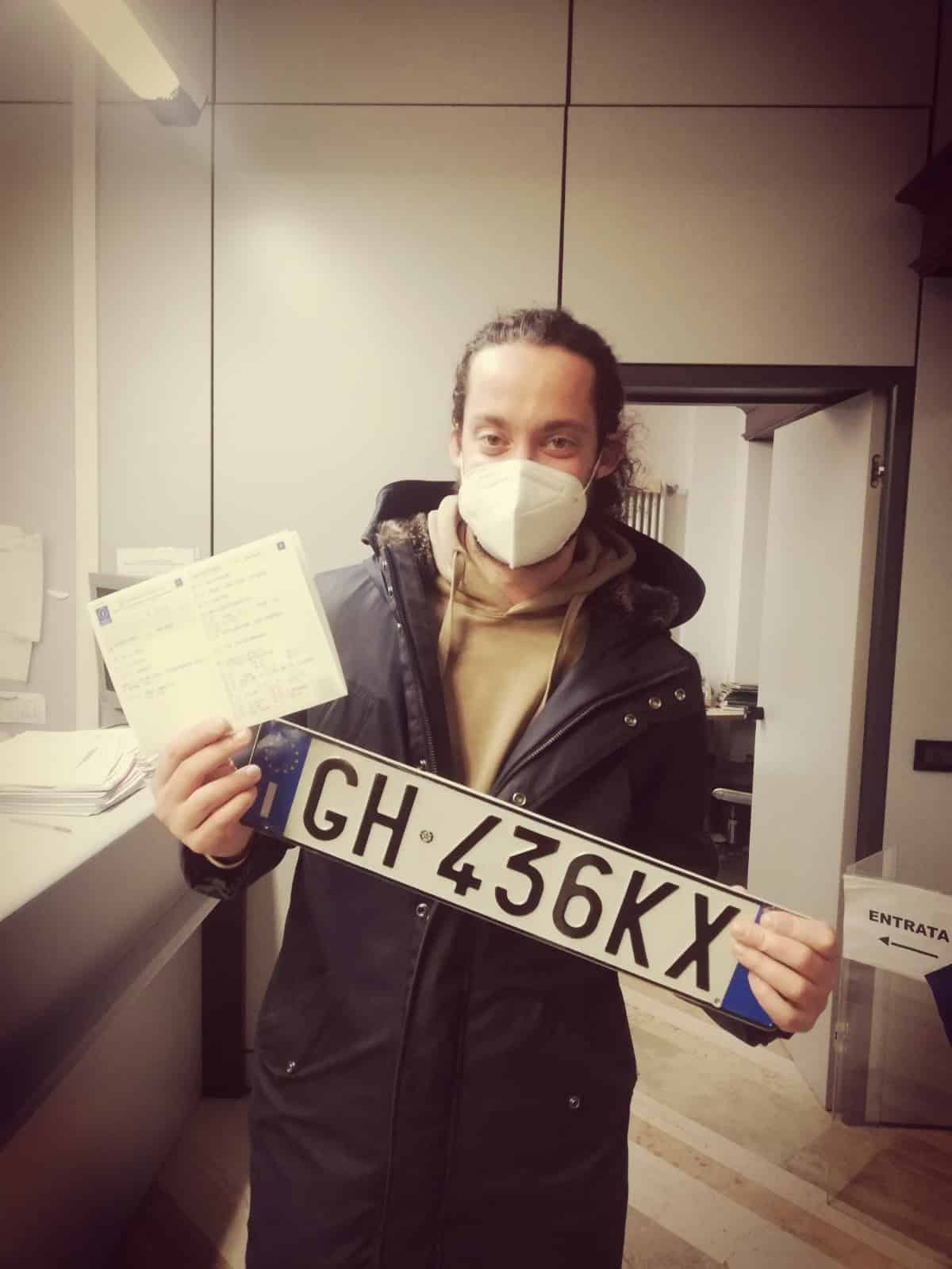
To recap, the approval process for a camper van in Italy is not properly covered by the Italian legal system. Nonetheless, there are 4 ways you can legally drive around in your camper van:
- Buy a vehicle already registered Camper (M1), strip it and rebuild it to your liking
- Outfit a commercial vehicle (N1) with a totally removable outfitting
- Buy and homologate a van in Germany and then nationalize it in Italy
- Lean on a specialized agency to handle the approval for you.
Each option has different advantages, disadvantages, and costs. Which one is best for you depends mostly on your needs and availability.
In conclusion, a personal tip is don’t let the bureaucratic complexities get you down!: Move step by step and you will see that anything is possible. Pay attention to details, be well-informed, and don’t stress more than necessary. In the end, put things in perspective: you are only trying to homologate a van 😉
UPDATE:I have published the long-awaited second part of this guide, where I explain how to homologate your van in Germany in more detail and all the steps you need to do to nationalize your van once back in Italy. You can find it here: Homologate your VAN: How to nationalize a camper van
BEFORE YOU GO, CAN I ASK YOU FOR SOME FEEDBACK?
Writing detailed articles like this takesa lot of time and effort..
If you liked it, can I ask you to leave me a feedback message in the comments at the bottom of the page?
For a content-creator, knowing that you are being read and that your efforts are useful to someone is the best motivation to keep writing and doing better 🙂
Let me know what you liked or what you think could be added.
If you’d like, you can also share the article to help other people find it!
Thanks for the help 🙂
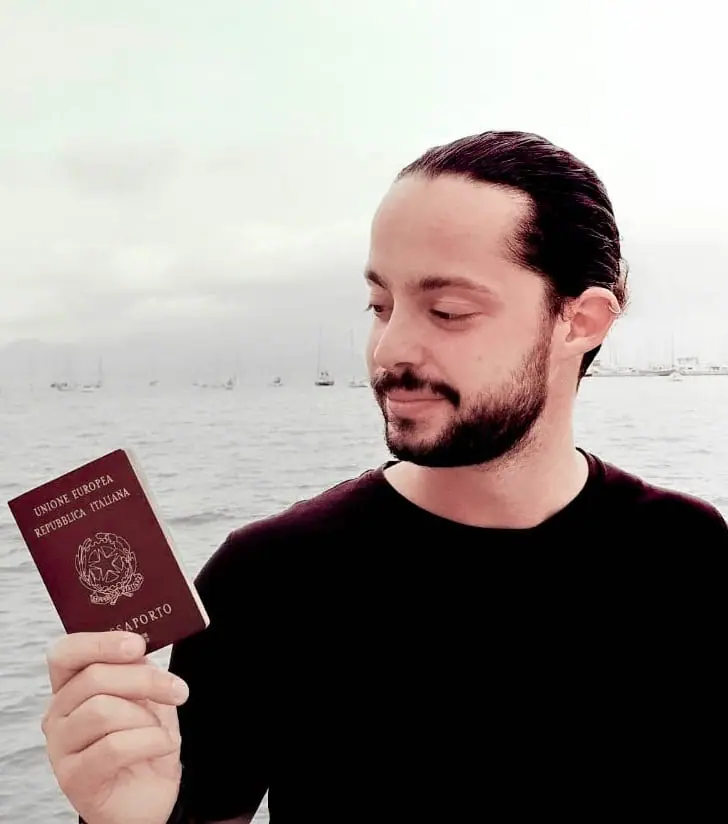
Read the Van Conversion Guides
How to Calculate the Right Section of 12V Cables | EASY GUIDE
An undersized cable does not carry enough current. A cable that is too undersized can lead to a fire. An oversized cable, on the other hand, simply costs more and is a waste of money. Are you wondering what is the logicfor choosing one section of cable over...
Bluetti vs Ecoflow | Which is the Best Portable Power Station for RV/Vanlife?
The Portable Power Station is an increasingly used accessory on camper vans and RVs, but when does it really make sense to purchase and own or install one? In this article we try to shed some light on how these systems work, the best options on the market, and the...
Van Conversion DIY: How Much Does It Costs? | My Experience
How much does it cost an entirely DIY van to campervan conversion? The queen of all questions... In this article, I want to show you all the costs of my conversion from start to finish, so that you too can get an idea of what it might cost! ...
Van Electrical Diagrams for your DIY Project – Ready to Install
The Electrical System is often one of the most complicated steps in a DIY van conversion. How much energy is needed? What apparatus/devices to purchase? How to connect them? How much would it cost? These are all doubts and questions that normally everyone finds...
Van Interior Conversion: Best DIY Ideas for your Project!
The Interior Outfitting of a DIY converted van is both an aesthetic and structural choice. In this article, you will find useful information and inspiration ideas for customizing the Walls, the Ceiling, and the Floor of your Van! DIY CAMPERVAN SET-UP:...
Kitchen for Camper | Best DIY Ideas for your Van Conversion
Cooking in Camper is one of those things, that makes you feel at home wherever you are! Gas, Diesel or Electric Stove? What equipment and accessories you need on the Road? How much space do you need? How to assemble the kitchen in your Camper? In this article you will...
The Best Fridge for Your Campervan – Which One to Choose?
Buying a trivalent or compressor RV refrigerator? Horizontal or vertical? 12V or 110/220V? In this article you will find all the information you need to choose the best fridge for Your Van, tailored to your Needs! 🙂 THE REFRIGERATOR IN THE VAN:...
Van Conversion: How to Build a DIY Bed for your Camper Van
A Camper is not a Camper if it does not have a bed. Where to Sleep and... Dream! In this Guide you can find the inspiration you need for creating a DIY Bed in Your Campervan, And I'll show you step by step how I built a Complete Bed/Dinette on my VW Crafter....
DIY Camper Bathroom: How to Self-Build a Toilet
If you are Campering a Van you surely must have wondered: How does the Bathroom in a Motorhome work? In this Guide I show you the various types of Bathrooms on the market, I explain how they work, and I show you how you can Build yourself an entirely...
Best 12V Fan for RV | DIY Installation Guide | Van Conversion
A Roof Fan helps keep your Vehicle's humidity under control and change stale air. In this guide you will find everything you need to know about mounting a Maxxfan Deluxe fan on the roof of YOUR van. ROOF FAN: WHAT IS IT FOR? Keeping an RV's...


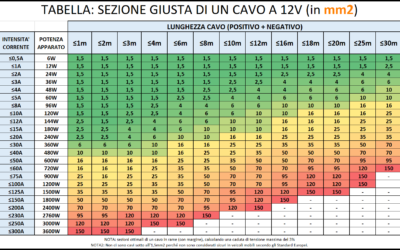
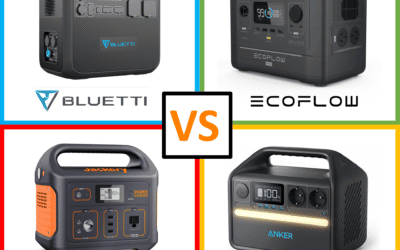

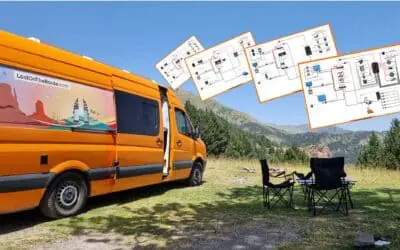


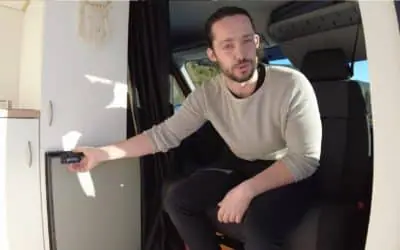
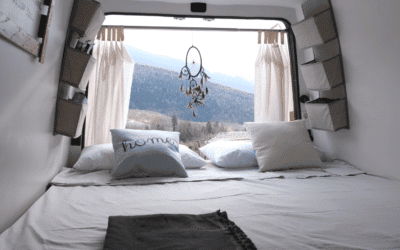

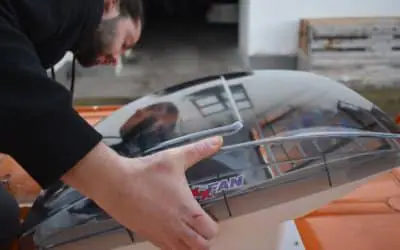



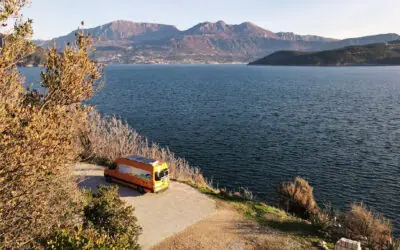
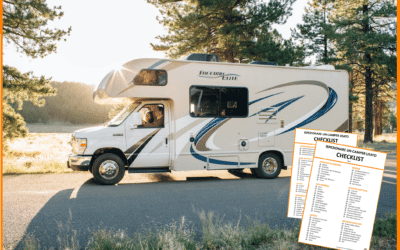



Hey! Complimenti for the great work on this page. I cannot thank you enough for summing up all this precious information, as it’s very hard to get by – especially in English. I’m a Dutch vanner based in Italy, my van is homologated to motorhome on Dutch license and am now considering getting it on Italian plates. If I understand well, this shouldn’t be much of a problem, since it’s already homologated, right? Any tips/advice on doing so? Thanks a lot!!
Thank you Joost!! Happy that it helped 🙂
If your van is already homologated as “Motorhome” you’ll have it pretty easy 😀 you just need to import is as you would do with any other vehicle 😉
I would suggest you to simply phone the “Motorizzazione” and let them tell you the modules you need to bring them (and which is the correct appointment to reserve for your case).
Thankyou that was amazing but my question is if I bring a van to Italy from the UK and want to use it in Italy how do I go about that
I need to convert it in Italy as it’s only a van transporting stuff to our new house in Calabria
I bought a van to do this. It has windows and was an old school bus
Many thanks
Hello Liz!! 🙂 It depends if you plan a “fixed” conversion (so with cladding, shower, permanent installations etc.) or a mobile conversion (fixing everything without using screws or glues. In the first case, you’ll need to pass through an homologation process (either through some agency or in Germany), in the second case you can just go around as technically you would be just “moving furniture” with your commercial van 😉
Amazing information, grazie mille. Your work is detailed, clear and so very highly appreciated! Siamo un coppia di Italiani che vogliono iniziare questo stile di vita e costruire il nostro van. Non sapevo di tutto questo processo per l’omologazione, mamma mia! Lo prenderesti ancora dalla Germania adesso o qualcosa è cambiato? Ho visto il video dei costi del tuo van su youtube e mi sembrava di aver capito che tra le cose che faresti diversamente c’è il dove avresti preso il van. Grazie ☺️ Pamela
Ciao Pamela!! Grazie per il tuo commento 🙂 Senti, se tornassi indietro probabilmente proverei a cercare con più determinazione in Germania un van già “M1-Wohmobil/camper” per non dovermi fare tutta la trafila…però è anche vero che non è facile trovarne in buone condizioni e con pochi kilometri. L’omologazione credo sia la cosa più noioso e arzigogolata di tutto il processo di camperizzazione XD comunque con pazienza è fattibile, non fatevi scoraggiare dalla burocrazia perchè alla fine il risultato ne vale davvero la pena 😀 Buona ricerca a voi!!! 🙂
What amazes me, is the sheer determination and generosity of this man, who, after spending many hours of bureaucracy and miles of travel, then takes the time to help us with these perfect articles. Personaly, After I imported my uk car I couldn’t wait to forget the whole thing. Bravo.
ahahah you gave me a good laugh! 🙂 I wrote it cause I don’t wish to anybody to live that same odyssey 😉
Question about keeping a sprinter van as N1 and using it with completely removable features. Other van camping resources indicated that (at least) some Italian campgrounds do not accept van campers (unless it’s registered as a camper, I’m guessing). Is it implied with this option, that those who go this route may be limited to camping options that don’t include some/many campgrounds?
Hi JR! Some (actually few) Italian campground indeed require in-depht registrations with all data of the vehicle (usually the largest/most organised ones), and have policies that don’t let them accept N1 vehicles. Said that, they are absolutely not the majority, and most campgrounds will welcome you without problems after paying at the entrance 🙂